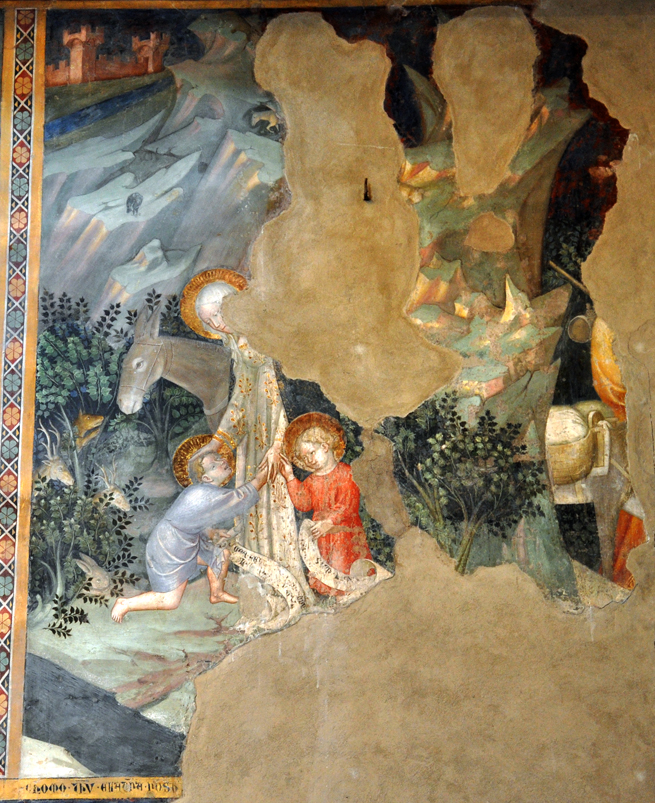
Lorenzo and Jacopo Salimbeni, John and Jesus as Children, from The Life of John the Baptist
1416
Fresco
Oratory of St. John the Baptist, Urbino, Italy
On their return from Egypt (Matthew 2:19-23) the Holy Family enters a wilderness teeming with wild animals. There a very young John the Baptist kneels to greet them. Luke 1:80 says John "was strengthened in spirit; and was in the deserts until the day of his manifestation to Israel." That explains the wilderness and the wild animals, but why would John have been there at such a young age? In the 3rd century St. Peter of Alexandria told a variant of the story: Elizabeth had fled with the baby when Herod ordered the slaughter of the innocents, and in anger the king then had Zechariah killed (The Canonical Epistle, canon xiii). In the 9th century Paulus Diaconus, surely relying on earlier sources, wrote a hymn in which John "sought the caves of the desert when of tender years." A modern Orthodox web site tells the story thus:
After the Nativity of our Lord Jesus Christ and the worship of the shepherds and the Magi, wicked king Herod gave orders to kill all male infants. Hearing about this, St Elizabeth fled into the wilderness and hid in a cave. St Zachariah was at Jerusalem and was doing his priestly service in the Temple. Herod sent soldiers to him to find out the abode of the infant John and his mother. Zachariah answered that their whereabouts were unknown to him, and he was killed right there in the Temple. Righteous Elizabeth continued to live in the wilderness with her son and she died there. The child John, protected by an angel, dwelt in the wilderness until the time when he came preaching repentance, and was accounted worthy to baptize the Lord."Nativity of the Holy Glorious Prophet, Forerunner and Baptist"
According to Golden Legend #86 John's desert abode was near the Jordan River. That may be river pictured in the lower left corner, although it is also possible that it is the "water" that The Vision of Theophilus says the family crossed on their way home.
We do not see St. Joseph in what is left of the fresco, but quite possibly the artists had him on the other side of the ass. Unfortunately, the writing on the two scrolls is not legible except for the word SUM ("I am") on the one held by Jesus.
In the far background one sees the continuation of the journey as the ass crosses some rough terrain on the way to the city in the upper left corner.
View this image in full
resolution.
View all the panels in The Life of John the Baptist.
Read more about images of St. John the Baptist.
Photographed at the oratory by Richard Stracke, shared under Attribution-NonCommercial-ShareAlike license.